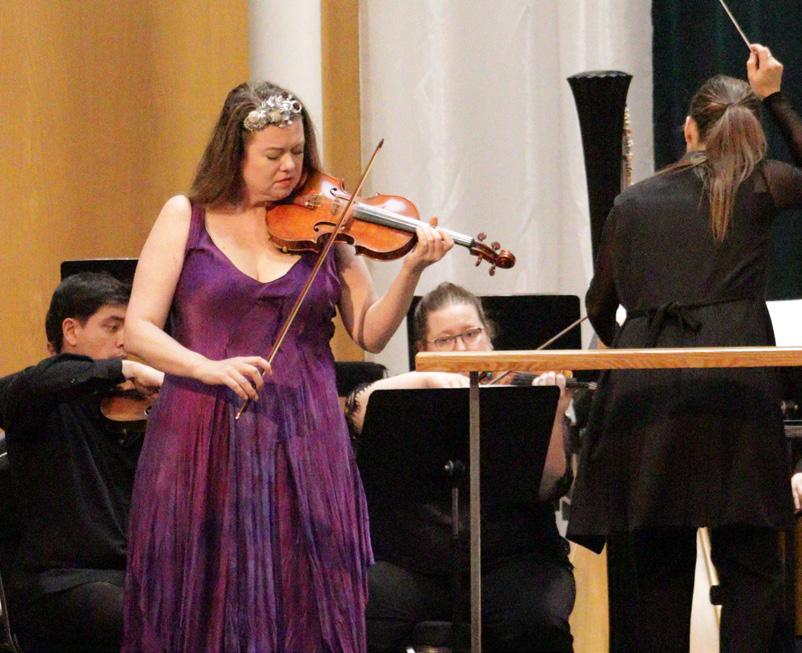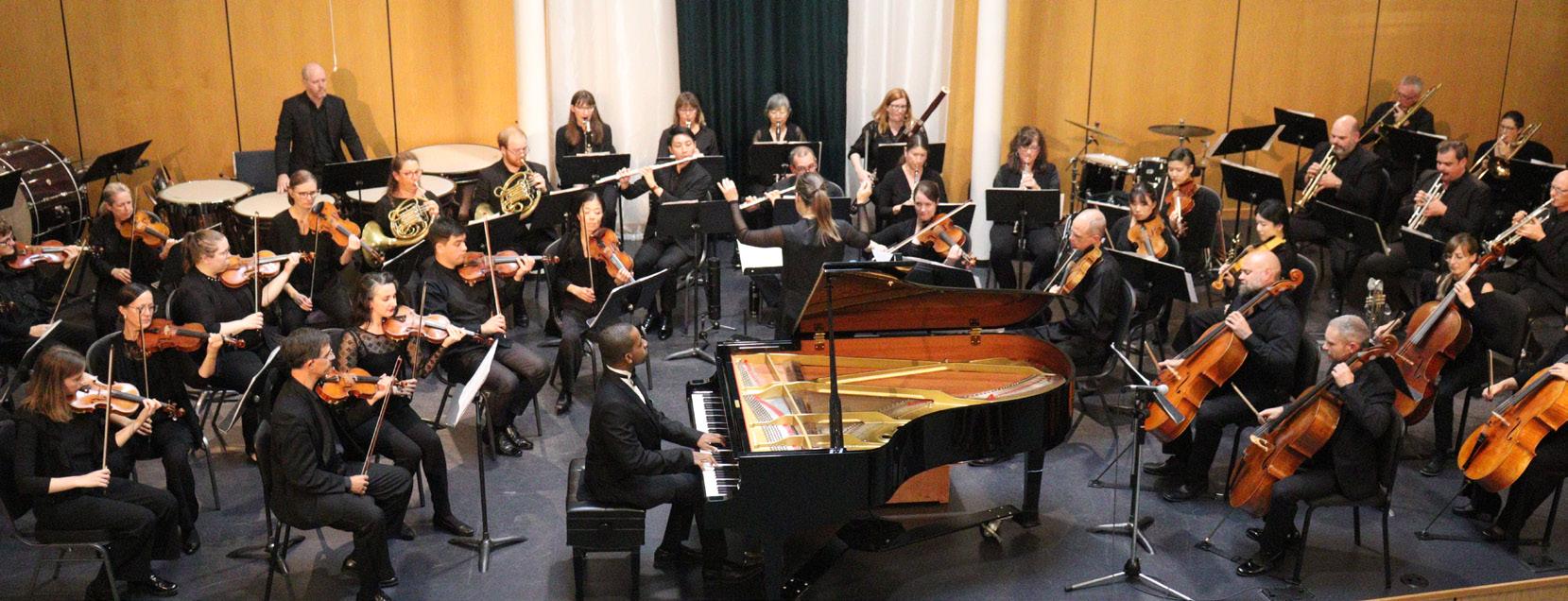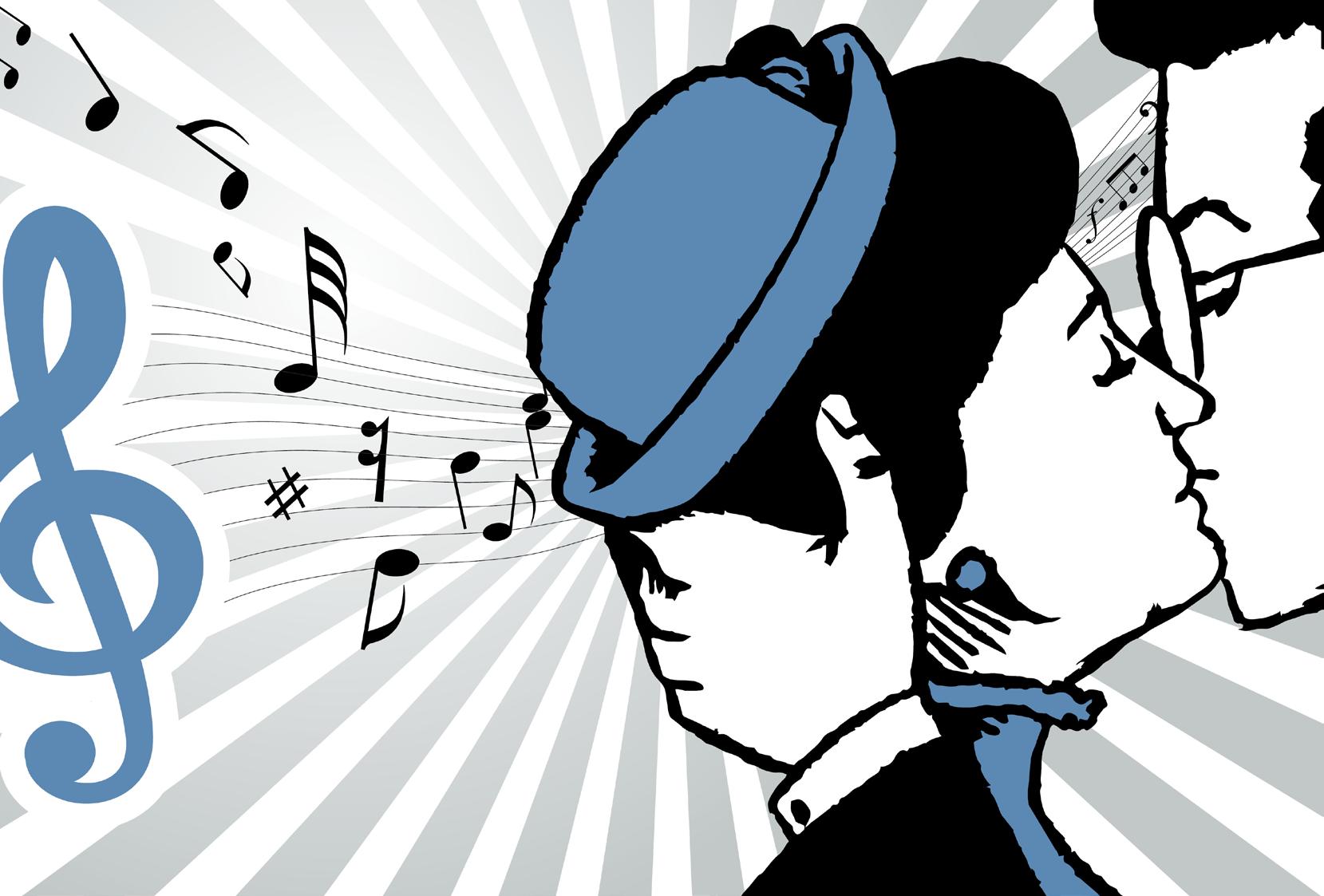

KamloopsSymphony.com 250.372.5000 LIGHT THE NIGHT A SYMPHONIC GRAPHIC NOVEL The Nexus at First Sunday March 10, 2024 • 3:00pm Salmon Arm Series PERFORMANCE SPONSOR
Volunteers make it happen We couldn’t do it without you!
Cilla and Peter Budda
Wendy Charlebois
Barb Ennis
Jean Ethridge
Marline & Tibout Glazenburg
Donna Good
Dale Johnston
Gabrielle Klein
Tony & Judy Lewis
Lynne Wickett
Jan & Bob Wilkins

THANK YOU VOLUNTEERS!

Dear Friends of the KSO,
We are delighted that you have joined us for this special performance, which celebrates the life and legacy of Alma Mahler-Werfel, one of the most fascinating and influential women in the history of music and art.
Alma was born in Vienna in 1879, into a world of culture and creativity. She was a talented composer, pianist, and singer in her own right, and was also a muse, wife, and mistress to some of the most brilliant and famous men of her time, including Gustav Mahler, Walter Gropius, Gustav Klimt, Alban Berg, and Franz Werfel. She inspired them with her beauty, intelligence, and passion, and influenced their artistic visions and expressions.
She was not only a lover of art, but also a creator who was stifled by the prejudices of the men around her. She was a survivor of two world wars, a refugee, and a citizen of the world. She was a writer, a socialite, and a philanthropist. She was a complex and contradictory figure, who left behind a rich and diverse legacy.
These Light the Night concerts are a tribute to Alma Mahler-Werfel and her contributions to the arts and humanity. They are also a celebration of the ongoing journey to equity and equality for women in music, who continue to break glass ceilings in their careers. We are proud to feature this concert which tells the story of Alma Mahler-Werfel's life and loves through live music paired with illustration.
We hope you are moved by this unique and inspiring performance, and we thank you for your support of the Kamloops Symphony Orchestra & KSO Music School. Together, we can light the night with music and art, and honour the legacy of Alma Mahler-Werfel and all women in music.
With heartfelt gratitude,
Christopher Young Executive Director KSO & KSO Music School
GOVERNMENT GRANTS

FOUNDATIONS
BC Interior Community Foundation
Kamloops Symphony Foundation
Shuswap Community Foundation
SOCAN Foundation
The Kamloops Symphony wishes to acknowledge that this concert is taking place on Tk’emlúps te Secwépemc territory within the traditional lands of the Secwépemc Nation.
Kamloops Symphony Society
BOARD OF DIRECTORS
John McDonald, ICD.D • President
Steve Powrie • Vice President
Tyler Klymchuk • Treasurer
Lisa Fuller
Christy Gauley
Lucille Gnanasihamany
Gabriele Klein
Sydney Takahashi
Simon Walter
HONOURARY LIFE MEMBERS
Bonnie Jetsen
Art Hooper

ADMINISTRATION
Executive Director
Christopher Young
Office Administrator
Sue Adams
Operations Coordinator
Sam Bregoliss
Marketing Coordinator
Ryan Noakes
Orchestra Personnel Manager
Olivia Martin
Production Assistant
Adrien Fillion
Proud Member of Orchestras Canada, the national association for Canadian orchestras
MUSIC DIRECTOR
Music Director Dina Gilbert is a Canadian conductor passionate about communicating with audiences of all ages to broaden their appreciation of orchestral music through innovative collaborations. This commitment, along with her extensive knowledge of the orchestra repertoire, has brought her to conduct orchestras across Canada as well as in France, Spain, the United States, Colombia and Japan. She has received critical acclaim for her energetic presence on the podium, her versatility, and her audacious programming.
In addition to conducting the Kamloops Symphony, highlights of the 20232024 season include return invitations with the Toronto Symphony, Orchestre symphonique de Montréal, the Orchestre symphonique de Québec, the Orchestre National des Pays de la Loire, as well as debuts with the Walla Walla Symphony and the Kingston Symphony. As the Principal Conductor of the Orchestre des Grands Ballets Canadiens de Montréal, Dina will perform Prokofiev’s Cinderella, as well as works of Lili Boulanger, Clara Schumann, Louise Farrenc and Kaija Saariaho in the ballet premiere of La Dame aux Camélias by choreographer Peter Quanz.
Her innate curiosity towards nonclassical musical genres and her willingness to democratize classical music has brought her to conduct the Orchestre Philharmonique de Radio France and the Orchestre national de Lyon in several Hip Hop Symphonic
programs featuring renowned Hip hop artists I AM, MC Solaar, Youssoupha and Bigflo & Oli. Dina is also renowned for her expertise in conducting multidisciplinary projects such as film concert performances (The Red Violin, The Artist, E.T. the Extraterrestrial).
As the founder and artistic director of the Ensemble Arkea, a Montrealbased chamber orchestra, Dina has premiered over thirty works from emerging Canadian composers and has reached thousands of children with her interactive and participative Conducting 101 workshops. From 2013 to 2016, Dina Gilbert was the assistant conductor of the Orchestre symphonique de Montreal and Maestro Kent Nagano, also assisting notable guest conductors including Zubin Mehta and Sir Roger Norrington. In April 2016, she received great acclaim for stepping in to replace Maestro Alain Altinoglu with the OSM in a program showcasing Gustav Holst’s The Planets. Featured in the recent documentary “Femmes symphoniques”, Dina Gilbert earned her doctorate from the Université de Montréal and polished her skills in masterclasses with Kenneth Kiesler, Pinchas Zukerman, Neeme Järvi and the musicians from the Kritische Orchester in Berlin. Awarded the Opus Prize of “Découverte de l’année” in 2017, Dina Gilbert was also named as one of the “50 personnalités créant l’extraordinaire au Québec” in 2018 by the Urbania Magazine.

Dina Gilbert

Meet the Orchestra
Music Director Dina Gilbert
Music Director Emeritus Bruce Dunn
FIRST VIOLIN
Elyse Jacobson concertmaster+
Geoff & Judith Benson Chair
SECOND VIOLIN
Boris Ulanowicz* Gabriele Klein Chair
VIOLA
Ashley Kroecher* June McClure Chair
CELLO
Martin Krátký*
Anonymous Chair
BASS
Maggie Hasspacher*
FLUTE/PICCOLO
Heather Beaty*
Eleanor Nicoll Chair
OBOE/ENGLISH HORN
Marea Chernoff*
CLARINET
Sally Arai*
John & Joyce Henderson Chair
BASS CLARINET
Julie Begg
BASSOON
Olivia Martin*
HORN
Sam McNally*
Dennis Colpitts
*Principal +Acting Principal ++Substitute Principal
KSO CHORUS—supported by the Kelson Group
Chorus Master Tomas Bijok
Collaborative Pianist Daniela O’Fee
Chorus Administrator Marnie Smith
TRUMPET
Mark D’Angelo*
Hugh & Marylin Fallis Chair
TIMPANI
Caroline Bucher*
PERCUSSION
François-Xavier Leroy*
Martin Fisk
HARP/PIANO
Naomi Cloutier
PIANO/HARMONIUM
Daniela O’Fee
LIBRARIAN
Sally Arai

PROGRAM
LIGHT THE NIGHT
Dina Gilbert; conductor Pauline Stive; illustrations
Heidi Muendel; soprano Catharine Varvaro; creator
Prologue: A gleam appeared in the valley
Alma Mahler Die stille Stadt arr. Kelly-Marie Murphy
Chapter 1: The wedding, March 1902
Gustav Mahler ...............................Symphony No. 5, mvt I
Chapter 2: Birth, November 1902
Gustav Mahler ...............................Symphony No. 5, mvt II
Chapter 3: Domestic bliss, June 1907
Gustav Mahler ...............................Symphony No. 5, mvt III
Chapter 4: Grief
Gustav Mahler ...............................Symphony No. 5, mvt IV
Chapter 5: La Grande Veuve 1908–1964
Gustav Mahler Symphony No. 5, mvt V
Epilogue: No one knows us thus
Alma Mahler Bei dir ist es traut arr. Kelly-Marie Murphy
PERFORMANCE SPONSOR

GUEST ARTIST
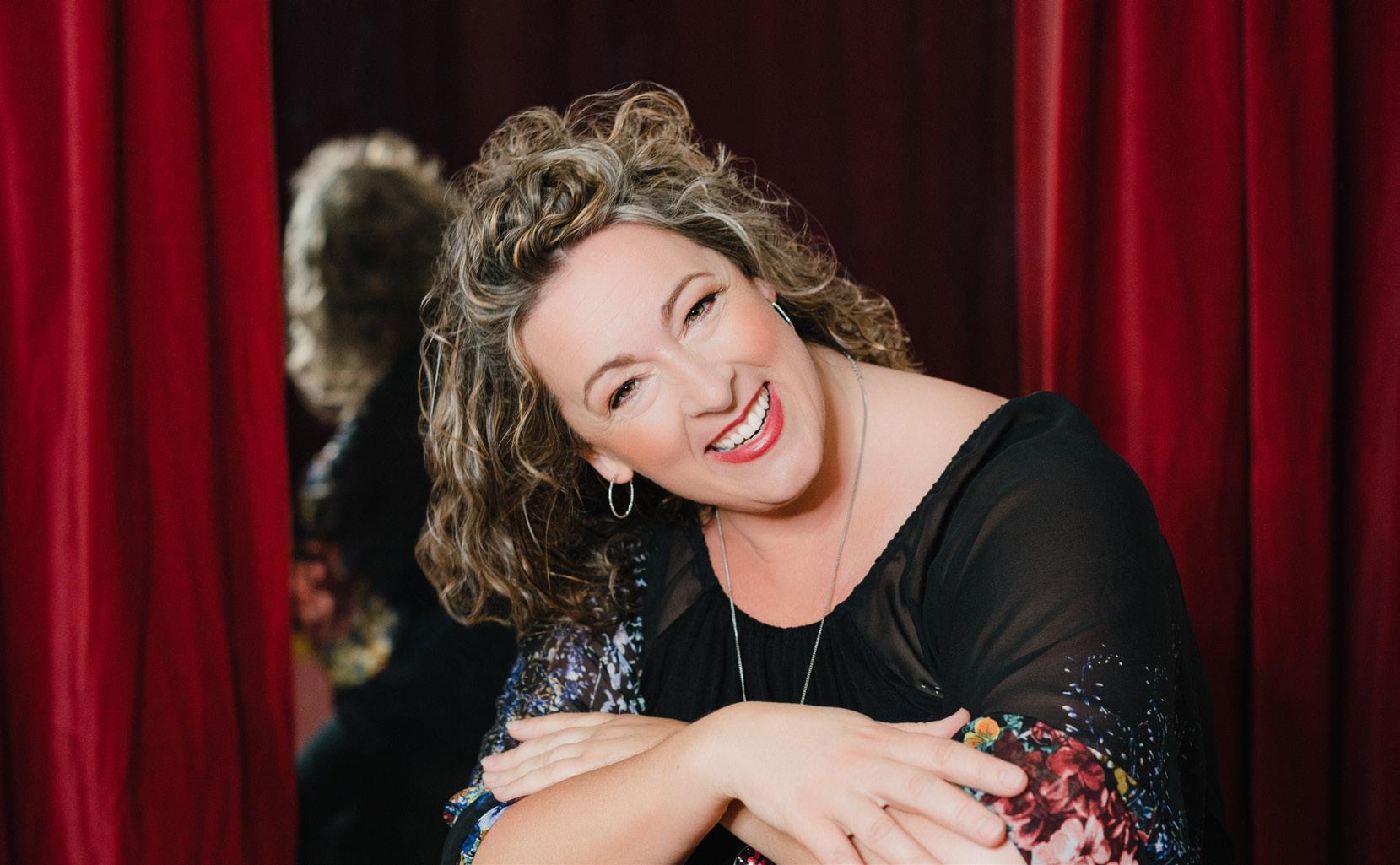
Heidi Muendel
Soprano
Dramatic soprano Heidi Muendel has recently returned to Canada after 10 years singing and teaching in Europe. Some of Heidi’s operatic credits include: the title roles of Turandot, Ariadne auf Naxos and Norma, Leonora from Fidelio, Amelia in Un Ballo in Maschera, and Santuzza from Cavalleria rusticana. Her concert credits include Verdi’s Requiem, Beethoven’s 9th Symphony and solo concerts with the Vancouver, Victoria, and Winnipeg Symphony orchestras. She is returning to performing after a break to raise her daughter. Heidi continues to teach both her European and Canadian students, conduct two local choirs, and offer vocal workshops internationally.
Heidi holds a Master’s in Music in Opera Performance from the University of British Columbia, was a regional finalist of the Metropolitan Opera Competition and recipient of the Canada Council Career Development Grant, and has benefited from studies at the Franz SchubertInstitute (Vienna) with a scholarship from the Johann Strauss Foundation, International Vocal Arts Institute, directed by Metropolitan Opera’s Joan Dornemann, and New York Opera Studio with Nico and Carol Castel and more recently participated in concerts and training in Spain with Janice Baird and Margaret Singer.
ILLUSTRATOR
Pauline Stive Illustrator
Storytelling is at the heart of Pauline’s work. Stunning and witty, her illustrations fill every inch of the page with meaning and symbolism. Pauline studied fine arts and illustration in France, where she was born. She has been living in Montreal for the last decade. After traveling for several years, she put aside her sketchbooks full of portraits to embark on a career as an editorial illustrator, creating one children’s book along the way. Still, portraits have remained central to her portfolio. For Pauline, they are a means of unveiling the qualities under the surface. Her caricature of Montréal mayor Valérie Plante even sits in the City Hall offices. She is always ready to tackle projects
that connect her to her core values: feminism, ecology and social justice. In more recent years, Pauline has kept busy creating illustrations for news articles, cider labels, album covers and more.
Light the Night is her biggest project to date. Diving into this creation, she most enjoyed exploring the complexity and beauty of a wordless narration, transforming Catherine Varvaro’s story into hundreds of images.
Pauline is also an amateur musician; she sings in the vocal quartet Tradiliada and plays piano and accordion in the Balkan-inspired band La Délégation. She is always keen to bring her passions together.

CREATOR
Catharine Varvaro Creator
Catherine’s career in music had been anything but a straight line, but with every twist, curiosity and persistence has guided her. As a kid, piano lessons gave way to the drum set because she was determined to learn to play In the Air Tonight. She wound up studying jazz drums and health sciences after high school before swerving left to pursue classical percussion performance at the Université de Montréal. Craving more knowledge about her craft, she lived for a year in Boston where she studied with the timpanist of the Boston Symphony Orchestra. Back in Montreal, she dove into a handful of challenges: fusing percussion and drum set in her eclectic electro trad group; performing and competing on the Highland snare with the Montreal Pipes and Drums; creating a sound design for Shakespeare in the park that earned her two META nominations; and completing her Master’s degree at the Conservatoire de Montréal.
Over the course of her freelance career in Greater Montreal’s orchestral scene, Catherine set out to specialize in timpani. She credits her approach to the instrument to the two summers she spent with the National Academy Orchestra and timpanist Jean Norman Iadeluca. Striving to embody his
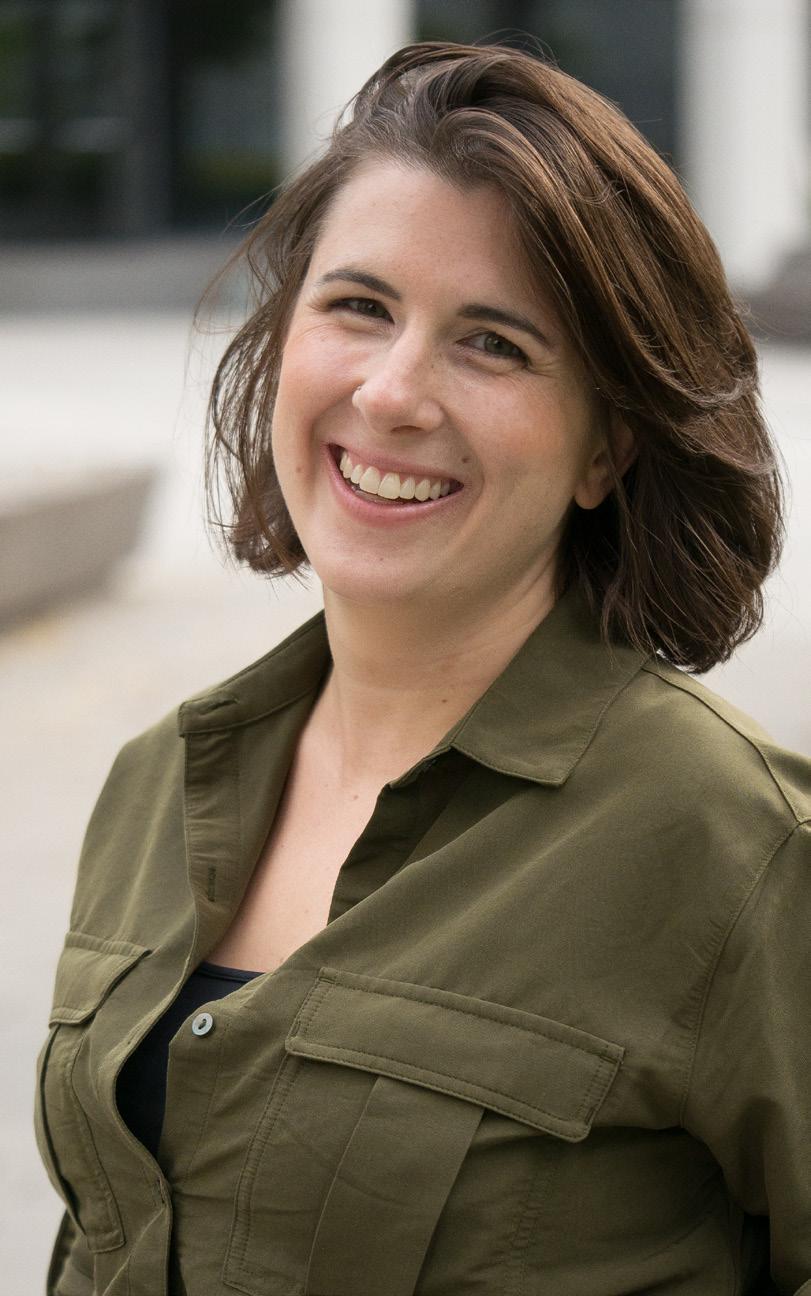
smooth, relaxed movements and big sound, she felt at home behind the four drums. For the past five years, she has had the privilege of being the timpanist of the Orchestre symphonique de Drummondville. Though she has always been interested in music’s ability to tell stories, she has most recently become fascinated with history’s forgotten figures. She created Light the Night, a symphonic graphic novel, to shed light on the invisible labour behind the great masterpieces of the classical music canon.
Sponsors




SERIES SPONSORS
SEASON SPONSORS





PERFORMANCE SPONSORS









PROGRAM NOTES
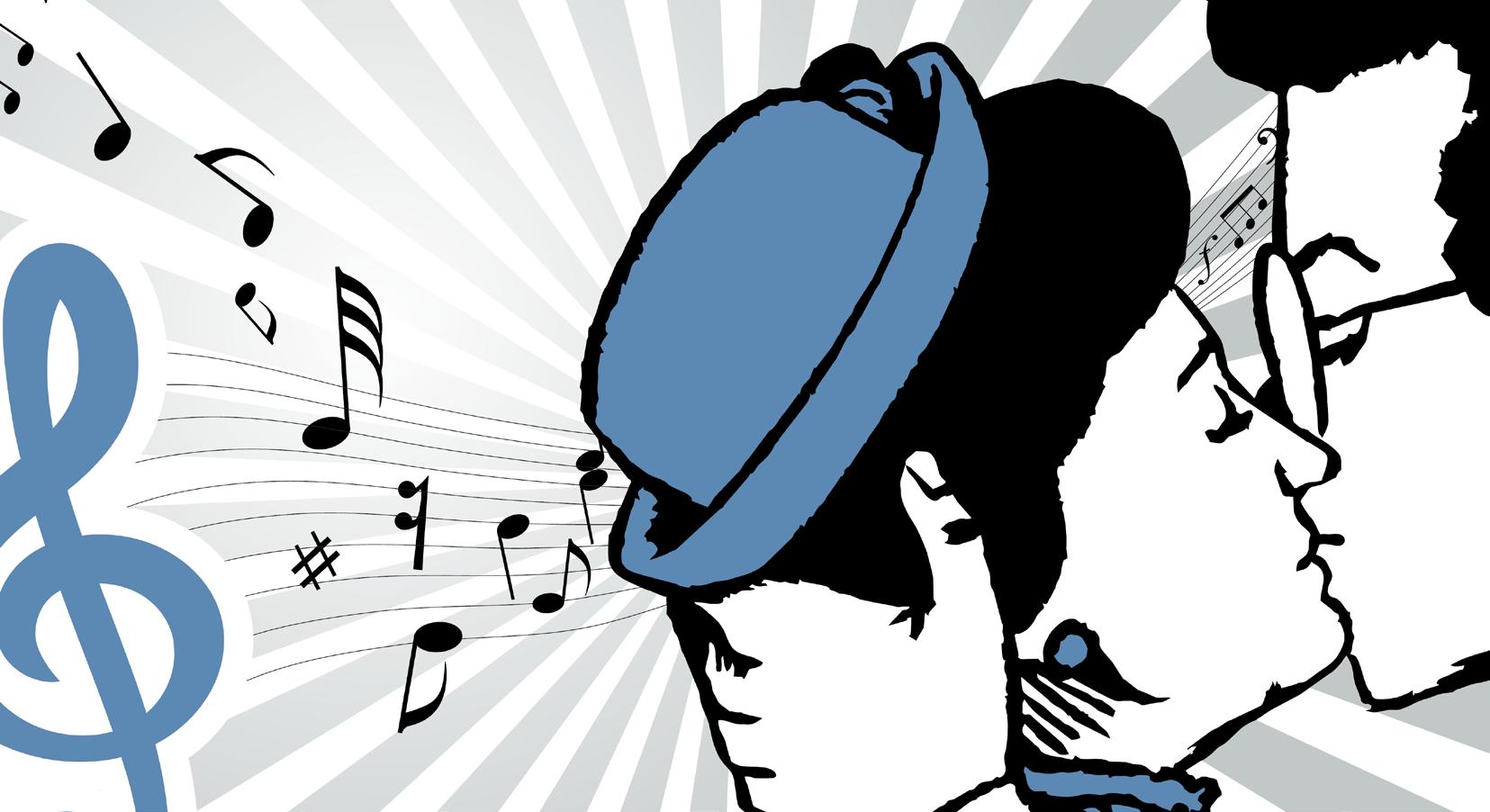
The realm of classical music, both of performance and of composition, is a fruitful place in which to celebrate, but also, sadly, to lament, the achievements of women in the arts. It is the relationship between the sexes in society at large, as well as within the world of music itself, that has almost always intervened to shape the accomplishments of women in the world of music, both their actual productivity and their public reputations. Going back over eight centuries, to the time of Hildegard of Bingen in 12th Century Germany, the careers of women who wrote music have seldom been part of musical history. The infrequent exceptions to this historical absence, such as the prolific career of Austrian composer Marianna Martines (1744–1812), friend of both Haydn and Mozart, only serve to emphasize the inequity. Do we hear Martines’ music played today? Do we even have much of her music to play? Publication was the avenue to public acknowledgement of success as well as for dissemination of the music itself. Music that remains in manuscript gets neglected, then lost, as was almost the case with 20th Century American composer Florence Price (1887–1953) whose career flourished, then declined, but who left a cache of unpublished works discovered only after her death.
For many women musicians, the impediment to a fulfilling career was that they were required to surrender their own promise and ambition to the demands of domestic life and to motherhood, sometimes specifically in support of the composing careers of their male companions. Such was the case with Alma Schindler, whose story is recounted with such imagination, musically and graphically, in today’s concert.
PROGRAM NOTES
Kelly-Marie Murphy (b. 1964)
Today’s multidisciplinary evocation of struggles in the life of Alma SchindlerMahler begins and ends with songs from Alma’s early collection, Fünf Lieder for soprano and piano. In this symphonicgraphic novel however, the original piano accompaniments have been arranged for orchestra in keeping with the prevailing orchestral sound-world of the work. These orchestral arrangements are the work of Kelly-Marie Murphy one of Canada’s most productive composers.
Based in Ottawa Murphy’s works are commissioned and performed by some of the country’s leading artists and ensembles, including the Toronto and Vancouver Symphony Orchestras, The Gryphon Trio, clarinetist James Campbell, cellist Shauna Rolston, the Cecilia and Afiara String Quartets, and harpist Judy Loman. Her reputation is not just North American, as her music is performed around the world by outstanding soloists and ensembles and broadcast on radio in many countries.
Her music has been interpreted by eminent conductors such as Sir Andrew Davis, the late Bramwell Tovey and Mario Bernardi, and heard in renowned concert halls, such as New York’s Carnegie Hall, The Mozarteum in Salzburg, and The National Concert Hall in Dublin. The Kamloops Symphony also performed “In the Time of Our Disbelieving” as part of its recent 2022–2023 concert series. The impact of her compositions on contemporary music is evident in the regularity with which her work has been acknowledged with prizes. Kelly-Marie Murphy is committed to an art that confronts contemporary reality, both external and internal, light and dark: “Smoke Darkened Sky” for piano, “Rains of Ash and Embers” for strings, “For Fragile Personalities in Anxious Times” for quartet, as well as “In the Time of Our Disbelieving” which the Kamloops Symphony performed as a part of its recent 2022–2023 concert series.

PROGRAM NOTES
Alma Mahler-Werfel (neé Schindler) (1879–1964)
(Bei dir ist es traut / Die Stille Stadt)
Alma Schindler, daughter of the famous landscape painter Emil Schindler, was in every respect an exception in Vienna at the turn of the century. She had not only a remarkably good education, and a keen mind, but was also blessed with abundant artistic talent. Her external appearance, characterized by engaging beauty and an distinct also made her into the fascinating centre of any social event, the envy of her female rivals and the magnet of male desires.
The list of admirers that accumulated in the course of Alma’s following life reads like a ‘Who’s who’ of the intellectual life of the time. She took composition lessons from Alexander Zemlinsky, music teacher and composer. After a while their working relationship turned into an affair and they considered marriage. Zemlinsky however, was clear about marriage: “Either you compose or you go to parties, one of the two. But choose what is closer to you—go to parties.” Then on 7 November 1901, she met the forty-one-year-old Gustav Mahler, Director of the Vienna Court Opera, 20 years her senior. She had seen him as a conductor and was very taken with him—but with his own music, not so much. Their first meeting ended in an argument over music but, interestingly, Alma’s audacity and independence of thought piqued Mahler’s interest. He asked her to a rehearsal and she agreed to go. Mahler’s subsequent approaches became more obvious; he wrote her love letters, walked with her in the
winter snow and showed her some of his songs. She was enchanted by them, having previously only heard his First Symphony and judged it “a deafening nerve-wracking din.” They married in March of 1902.
When Gustav Mahler married Alma, she was not only a beautiful and well-known young woman in Vienna, she was also emerging as a promising, if somewhat impulsive composer. Alma did not yet suspect that Mahler (who was used to having his way) also had explicit views about marriage. Up to now, Mahler’s sister, Justine, had been his housekeeper. Now, Alma, as his bride, was to assume that role, take the load off his back for him, the artist and worker. When Alma ended one of her letters to him saying she had no more time to write him as she had to compose music, her husband replied with a letter giving his views on marriage at length. — A marriage between two rivalling composers was an absurdity, Alma was not to be a ‘colleague’, but nothing but his ‘wife’. ‘Does it imply for you a rupture in your life and do you think you will have to eschew an indispensable peak in your being, if you completely renounce your music in order to possess mine?’ Instead of writing music, she was now to devote herself entirely to him: ‘From now on, you will have only one profession: making me happy!’ With that, gone was any dream she may have had that their marriage would be a partnership of creative equals.
PROGRAM NOTES
Gustav Mahler (1860–1911)
In his lifetime, Mahler’s reputation was built to a great extent upon his career as a conductor, of both orchestral works and opera. He had appointments with several major European orchestras culminating at the Vienna State Opera for ten years and, when the increasing anti-Semitism of the early 1900s became oppressive, with the Metropolitan Opera in New York and the New York Philharmonic. With this demanding performance schedule it seems astounding that he ever found time to compose, let alone the colossal symphonic works that form a substantial part of his musical output. Mahler’s musical product was focused chiefly on the symphonic form as bequeathed
to him by Brahms and Bruckner. In his hands, the symphony grew even greater in length and complexity of musical utterance, and in richness of orchestral and vocal resources. But not much of his own work was performed in his lifetime. Then, after his death, his work remained relatively unknown, familiar only to a few champions, composers and music specialists until the 1960s, when recording technology helped build a wider familiarity with his work. Now Mahler is rightfully seen as one of the most significant composers of the late Nineteenth and early Twentieth centuries.

PROGRAM NOTES
Light the Night: A Symphonic Graphic Novel
Tonight’s performance is a highly original symphonic graphic novel created by Catherine Varvaro as an exploration of the struggles of a newly married woman confronting the competing urges of domesticity, motherhood and artistic expression to find self-fulfillment. It is the depiction of a period early in the married life of Alma Schindler-Mahler, but the experiences it presents are not unfamiliar to aspiring women artists across the centuries. Through more than 800 illustrations created by Pauline Stive,

we are living Alma’s story through her music and through her husband’s Fifth Symphony. With the sudden death of her first-born daughter, Maria Anna, at age five, the light is replaced by a shadow that exposes the divisions within her as she searches for her lost daughter in “a murky alternate reality.” Here Alma must confront her different griefs and disappointments in an attempt to reconcile her divided self and to find a way to restore the creativity forbidden by her husband.

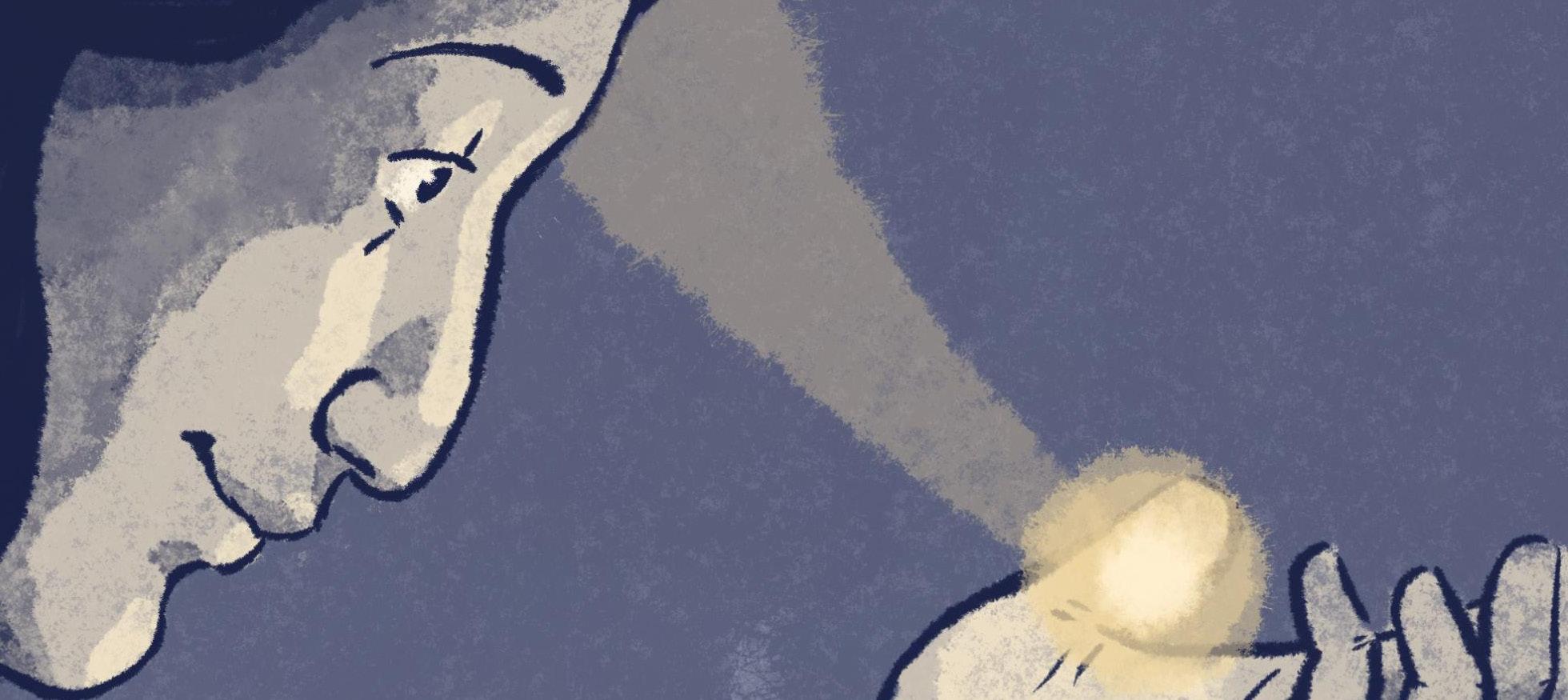
PROGRAM NOTES
Gustav Mahler
Symphony No. 5 in C sharp minor
Between the two songs by Alma Schindler, orchestrated by Kelly-Marie Murphy, we listen to a performance of the fifth symphony by Alma’s husband Gustav. This substantial work is the musical “canvas” upon which the images of this graphic story unfold. For many of his symphonic works Mahler requires very considerable orchestral forces. As for the performance of Mahler’s Symphony No. 4 in March of 2022, the Kamloops Symphony will be performing one of the stellar orchestral reductions by Klaus Simon. The performance itself is complete and unbroken—all five movements—before ending with the second of Alma’s songs. It remains a broad musical palette enriching the wealth of projected images that also command our attention.
Mahler wrote his Symphony No. 5 between 1901 and 1903. It was the happiest time of his life: his conducting career was a success, his own compositions were increasing in popularity, and he had met and married Alma Schindler. This last event, which occurred between the two summers in which he composed the symphony, invite speculation about the role personal happiness might have played in its ongoing composition.
The symphony has five movements which Mahler has further organized into three groups: Movements 1 and 2; at the centre, Movement 3; and then
Movements 4 and 5. A trumpet fanfare opens the symphony. Mahler names it a Funeral March “in measured stride, Strictly.” Like a funeral procession. The second movement Mahler designates “Stormily turbulent. With great vehemence.” This turbulence turns into a section of quite complex development and the movement closes with a Chorale. The central movement (3) is an expansive Scherzo that Mahler labels “Powerful, not too fast.” It seems to have been the movement with which he started his work on this symphony. The Scherzo is followed by the movement that is probably the most well-known piece Mahler composed: the Adagietto for strings and harp. Its popularity springs in part from the use made of it by Luchino Visconti in his 1970 film of Thomas Mann’s novella Death in Venice. Another, rather sentimental, reason is people’s belief that the movement is a musical love letter to Alma: since it was composed at the same time as their courtship the idea is not implausible. Apparently, Gustav sent Alma the manuscript of the movement without any further words. For her part, she entirely understood and sent her answer: “You can come!!!” The symphony’s Finale is a Rondo. The instruments present themes and motifs in alternation, almost as if in energetic dialogue, many are developed in counterpoint. One final sparkling torrent of brass brings the symphony climactically to a close.
Thank you to our Donors
Donors
$2000+ CONDUCTOR’S CIRCLE
ANONYMOUS
Kelvin Barlow
Foundation
Beaulieu-Saucier
Gabriele Klein
June McClure
$1000+ BENEFACTORS
Lorene & Ben Anders
Geoff & Judith Benson
Holly Campbell
Geoff & Kathy Collier
Dina Gilbert
John & Joyce Henderson
Alan & Gwen Kerr
Delores Kroetch
Bruce Martin
$500+ OVATION
ANONYMOUS
William & Pierrette Beaton
Kim Buker
Tom Dickinson & Nancy Flood
Jessie & James Fedorak
Carol Howie
Bob & Jo-Mary Hunter
Marjorie King
Cindy Malinowski & Charles MacLennan
Rae Nixon
Tacey Ruffner
Sheila Stewart
Maureen Stewart
TELUS
John Watson
John & Joan McDonald
Elspeth McDougall
Rod Michell
Daniel Mills
Eleanor Nicoll
Colene Palmer
Terry Simpson
Jerry Stack
David & Alison McKinnon
Helen & Bruce Newmarch
M. Colleen Stainton
David & Rosemarie Stoltze
Stan Szpakowicz
Susie Safford & Carlos Tallent
Bob Walter & Jill Calder
Gibraltar Law Group
$250+ ENCORE
ANONYMOUS
Patricia Akiyama
Peter & Debra Allik
Petersenn
Francis & Helen Barnett
Luciana Comparelli
Murray & Ann Crawford
Fred Cunningham & Helen Birdsall
$100+ BRAVO
ANONYMOUS (2)
Luisa Ahlstrom
Darryl & Jeryl Auten
Wendy Bainbridge
Michael Baker
Tom Barley
Joan Bernard
Karen Bernard
Maureen Boudreau
Shauna Bourassa
Robin Bowolin
Pauline & Jack Braaksma
Pamela Bradley
Margaret Brown
Lori Bustin
Nola Campbell
Wendy Charlebois
Margaret Chrumka & Paul Clark
Alexander Crane
Phil Crossley
Jean Dahl
Roxanne Dauncey
Brienne Dawson
Joanne Dennstedt
Joyce Dorey
Nicolette Eadie
Jennifer Edwards
Jean Ethridge
Brent Ezzert
Brett & Norma Fairbairn
Ruth & Michale Fane
Judith Fowles
Donna Geefs
Wilma de Jong
Dan & Denise Douglas
Dawn Ebata
William & Sheena Flynn
Lisa Fuller
Greg & Susan Hall
Lois K. Hollstedt
Jon Just
Christina & Reimar
Lucille Gnanasihamany
Joy Gothard
Linda Graham
Peter & Judy Gray
Shannon Gruen
O’Della Grundy
Katherine Gulley
Megan Hanks
Deborah Hansen
Frances Higginson
Chrystal Hillier
Greg & Danita Howard
Mary Hunter
Claire Johnson
Pat & Fred Kaatz
Ashley Kharboutli
Kats & June Kitamura
Jonathan Lartner
Mary Lester
Michelle Liebe
Teresa Lomax
Lynn Lyall
James MacDonald
Sylvia Rose Markowsky
Kristen McDougall
Phil McIntyre-Paul
Kait Methot
Dianne Miller
Brian Mills
Joan Moffat
Christy Morris
Candace Morrison
Heidi Muendel
Kathleen Nadler
DONORS
Kroecher Fund
Fred & Nancy Leake
Vic & Sally Mowbray
Chris & Marg Parfitt
Margaret Pattern
Michael & Pamela Saul
Sue Tuner
Dave & Maryanne Whitting
Charo Neville
Joanne & Rol Nisbet
Daniela O’Fee
Chantal Oliver
Ron & Louise Oyler
Janice Pedersson
Jos Penner
Penny & Carl Pentilchuk
Steve Powrie
Thomas Preston
Gerald Hans Reichenback
Terry Rogers
Susan Rolston
Chris & Gine Rose
Garth Rustand
Debbie Rustand
Lynn Rotherford
Christopher Sage
Tricia Sellmer
Barbara & Carman Smith
Donald & Sandra Staff
Syd Takahashi
Ed Takahashi
Lynne Totten
Nicole Tougas
Evelyn Vipond-Schmidt
Mike Webber
James & Barbara Wentworth
Marylee Weski
Eric & Mary Wiebe
Judy Wiebe
Lois & David Williams
Sandra Wilmot
Michael Wisla
The above represents the individuals and corporations who have donated to the Kamloops Symphony Society in the last twelve months. For any errors or omissions, please do let us know at 250.372.5000 or info@kamloopssymphony.com.
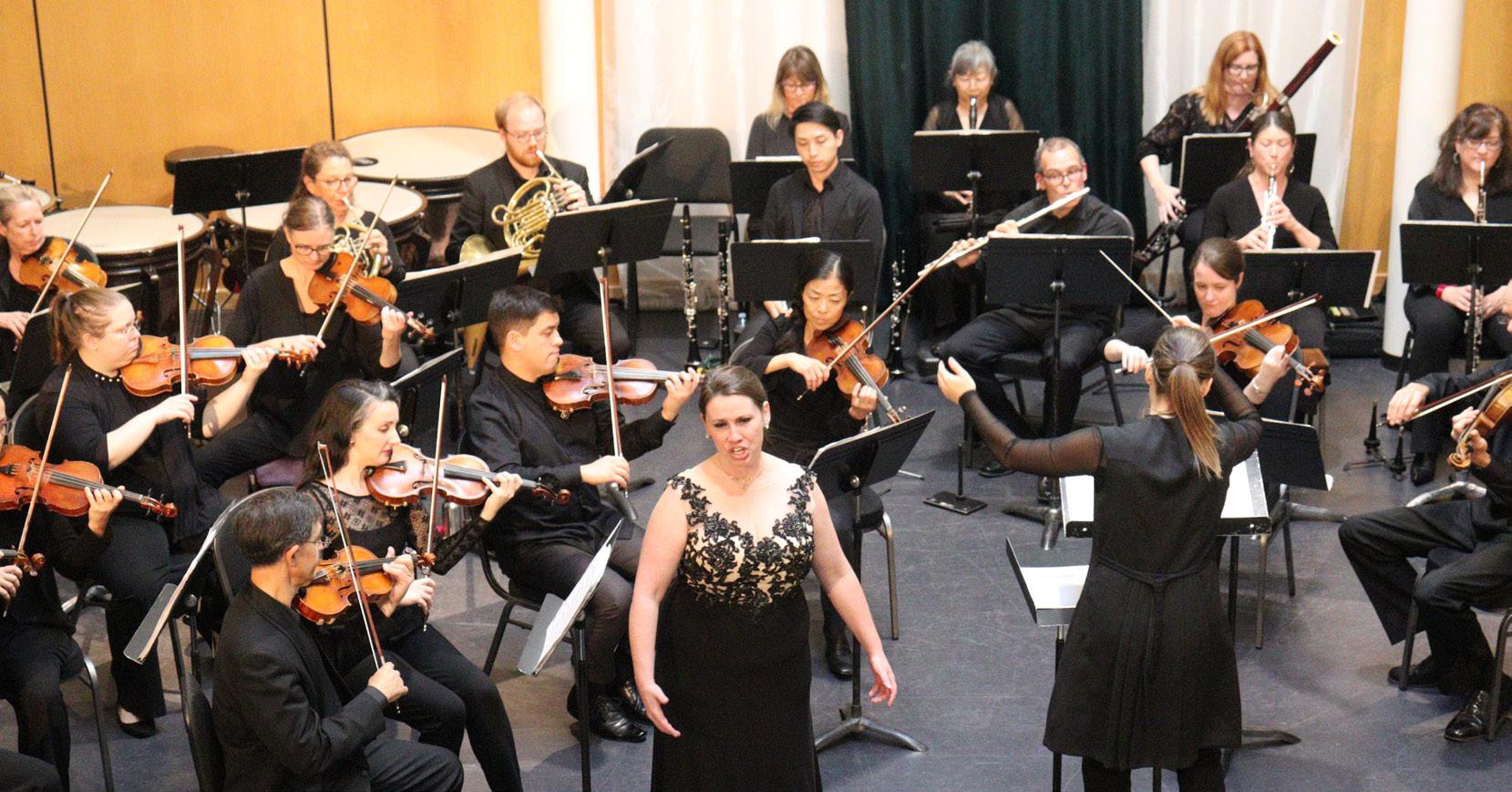
THANK YOU FOR JOINING US THIS SEASON!
We’ll see you again for our 2024/25 Season


